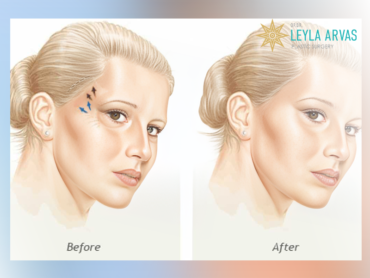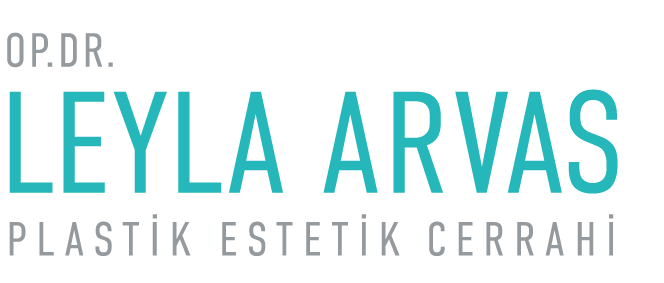
Temple filler is a procedure performed on individuals who have depressions, hollows, or wrinkles in the temple area. The temple region can appear sunken and hollow due to genetic factors or the aging process. This appearance can give the person’s face a gaunt and skeletal look. Additionally, wrinkles, lines, and sagging in the temple area make the person appear older and tired. All of these negative appearances can be corrected with temple filler, resulting in a healthy, ideal, and smooth facial appearance. This procedure is easy and practical to perform, providing an aesthetic transformation to the face without the need for surgery.
What is Temple Filler?
The temple area refers to the region between the forehead and the ears, on the side of the eyes. The temple area can exhibit sinking, hollowing, and wrinkling due to congenital factors, genetic reasons, rapid weight gain or loss, aging, or deformations resulting from illness or accidents. Temple filler is used to restore the temple area to its ideal shape and create a vibrant, smooth skin appearance. Temple filler fills in the hollows and indentations in the temple area, allowing the skin to regain volume and eliminate the skeletal appearance.
What Are the Types of Temple Filler?
There are two types of temple fillers in terms of content: Dermal Fillers and Fat Injections.
Dermal Temple Filler is a filler that uses a high concentration of Hyaluronic Acid. Hyaluronic Acid provides effects such as cell regeneration and collagen enhancement in the human body. It is a water-based substance, making it completely natural and safe.
Fat Injection involves removing excess fat from the individual’s body through liposuction and preparing it for the filler procedure. Since this filler substance is the person’s own fat, it is completely safe. Fat injection provides a dual advantage: the person gets rid of excess fat while fulfilling the filling needs in the temple area.
How is Temple Filler Applied?
The application of temple filler is the same for both Dermal Fillers and Fat Injections. Before the procedure, the temple area is numbed with an anesthetic cream. The appropriate technique for the individual is determined, and the filler substance is transferred to the necessary areas using a blunt-tipped cannula or a sharp needle. This procedure can be applied to a single temple or both temples depending on the individual’s needs. The procedure takes about 15-20 minutes.
Who is Suitable for Temple Filler?
The following conditions must be met for temple filler:
- Being 18 years or older
- Not being pregnant or breastfeeding
- Not having allergies or chronic diseases
- Not being afraid of surgery or having any obstacles to undergoing surgery
- Experiencing problems such as fat loss, hollowness, or sinking in the temple area
- Having a bony and skeletal appearance in the face
- Temple filler can be applied to anyone, regardless of gender.
What Should Be Considered After Temple Filler?
Since temple filler is a short and practical procedure, the person can immediately return to their daily life. Effects such as swelling, redness, and swelling may occur in the application area. These effects are normal. Applying cold compress can provide relief. Swelling, edema, and redness will disappear within a few days. After temple filler, it is important to follow the doctor’s recommendations and pay attention to the following criteria:
- Protecting the temple and head area from impacts
- Avoiding hot water, steam rooms, saunas, or high heat and humid environments
- Avoiding sleeping on the temple area
- Avoiding strenuous activities
- Drinking plenty of water
- Not rubbing, scratching, or massaging the temple area
Is Temple Filler Different from Other Fillers?
Although temple filler has the same content as other fillers, it differs in terms of technique. The temple area is a sensitive region, and the preservation of the blood vessels in this area is crucial. Therefore, two techniques can be used for application:
- The first technique involves application with a sharp needle. In this technique, the needle is passed through the temple bone with a single puncture, allowing the filler substance to spread into the area.
- In the second technique, a blunt-tipped cannula is used to inject the filler substance into the skin. In this technique, the filler substance remains just beneath the skin, close to the surface without going deep. However, preserving the blood vessels is more guaranteed and easier with this technique.
What Are the Benefits of Temple Filler?
Temple filler provides the following benefits:
- It eliminates wrinkles, asymmetry, and sinking issues in the temple area, resulting in a shaped, smooth, and vibrant skin appearance.
- The bony and skeletal appearance of the face disappears, and an oval, healthy facial contour is achieved.
- Temple filler provides a slight lift and lifting effect on the eyebrows.
- It is an easy and practical procedure, providing quick results.
- It is a procedure performed without surgery or general anesthesia.
- When the effect of temple filler diminishes, it can be reapplied.
- Temple filler is a risk-free, harmless, and reliable procedure.
- It contributes to an individual’s external appearance, leading to increased morale and self-confidence.
Does Temple Filler Cause Pain?
The temple area is numbed with local anesthesia before temple filler is applied, so the person does not feel any pain or discomfort. Since no incision is made, there is no pain after the procedure. The person can immediately return to their daily life.
Does Temple Filler Affect the Appearance of Eyebrows?
The filler applied to the temple area has a lifting effect on the upper part of the face. This effect also causes a slight lift in the eyebrows. If a more significant eyebrow lifting effect is desired, solutions can be achieved through treatments such as Botox, additional fillers, or surgical methods.
When Does Temple Filler Take Effect?
The effects of temple filler can be seen immediately after the procedure. If there is swelling, edema, or similar effects in the temple area, it takes about one week for these effects to subside and the filler to settle. On average, 5-7 days are sufficient to fully observe the effects of the filler.
Is Temple Filler Permanent?
Temple filler, like all fillers that are harmless to the body, is temporary. Dermal and fat fillers gradually dissolve over time depending on factors such as the passage of time, the speed of metabolism, the individual’s health, and the care taken for the application area. Dissolved fillers are naturally eliminated from the body. Dermal temple filler lasts for 1-1.5 years, while fat injection lasts for 2-3 years.
Is Temple Filler Only for Women?
Temple filler is a procedure that can be applied to both men and women. The application of the filler varies according to the individual’s facial features. After injecting the filler into the temple area, it is manually shaped to create a harmonious appearance with the face. The application of temple filler to men aims to create a more masculine and angular facial contour. For women, filler procedures are performed to achieve a more feminine and rounded facial contour.
Are There Any Risks with Temple Filler?
Temple filler must be performed by an experienced Plastic Surgeon or Dermatologist. Since the temple area contains blood vessels, it is a sensitive area that requires careful attention. Therefore, it should be performed by an expert doctor to determine the appropriate technique and select the correct filler dosage. It is
